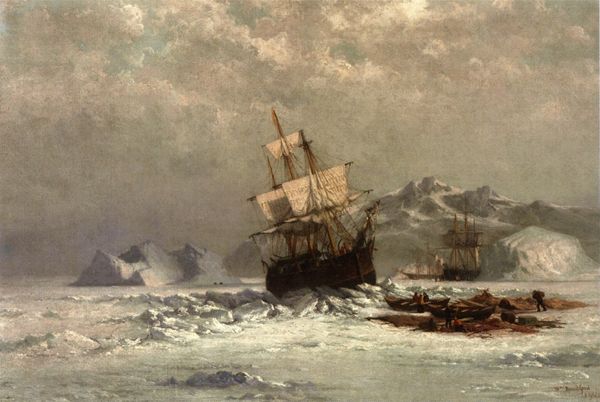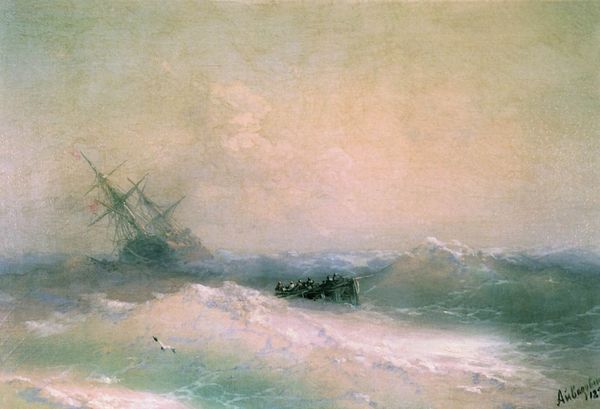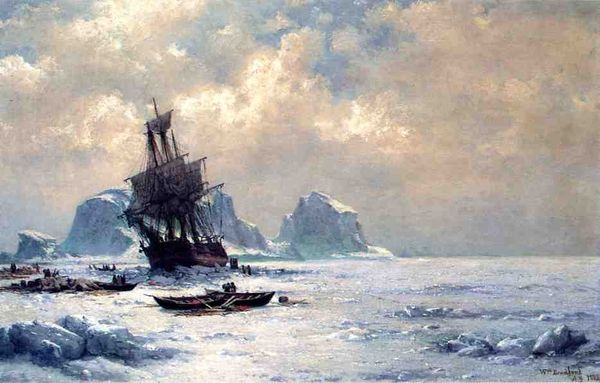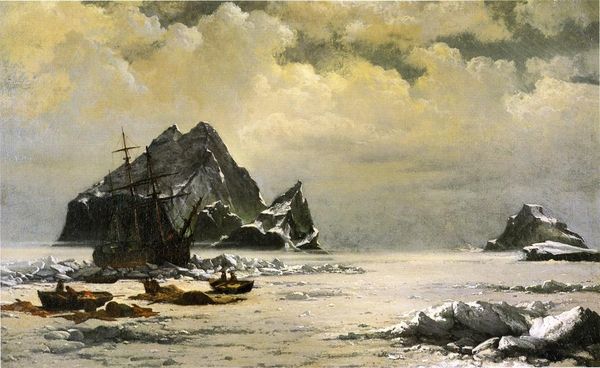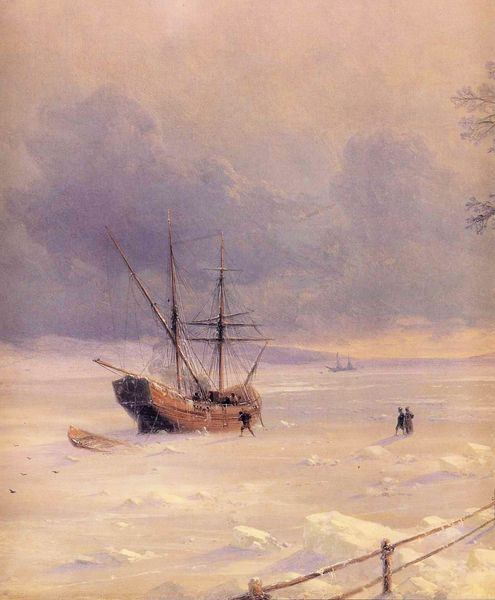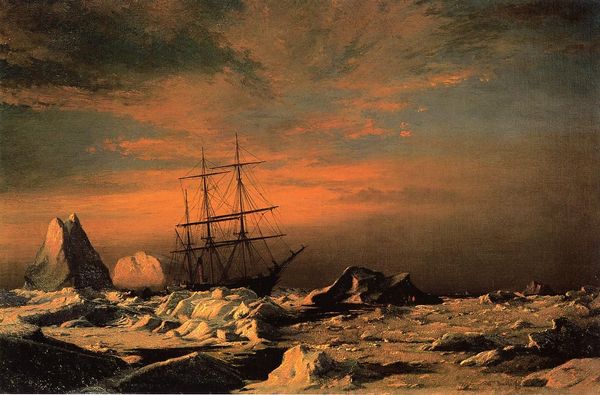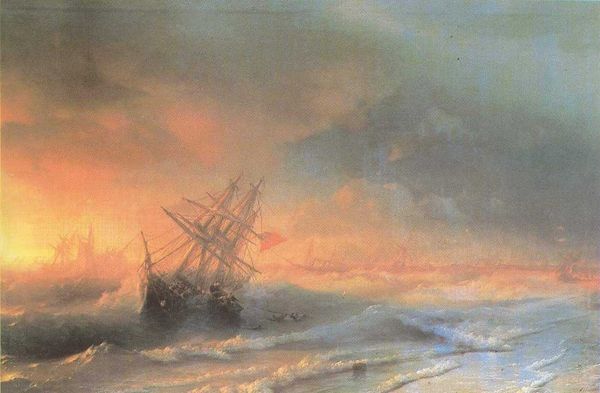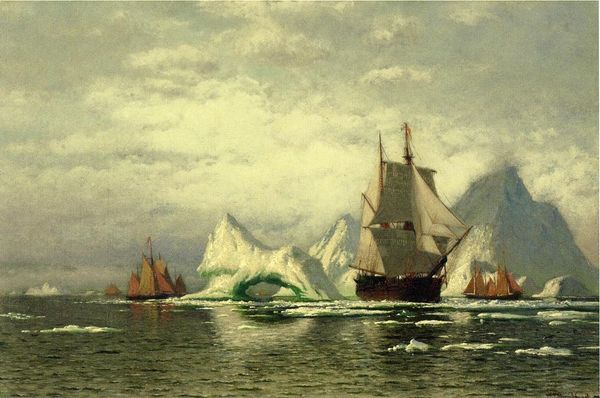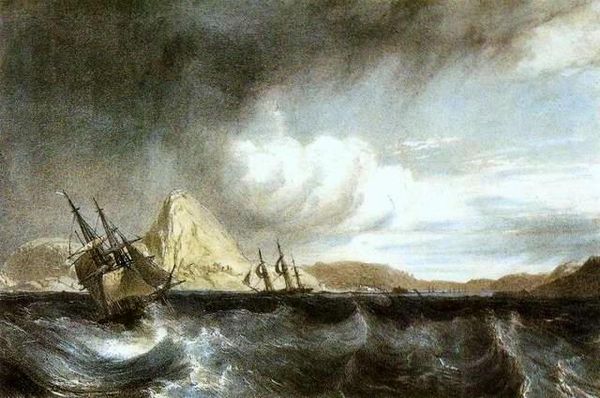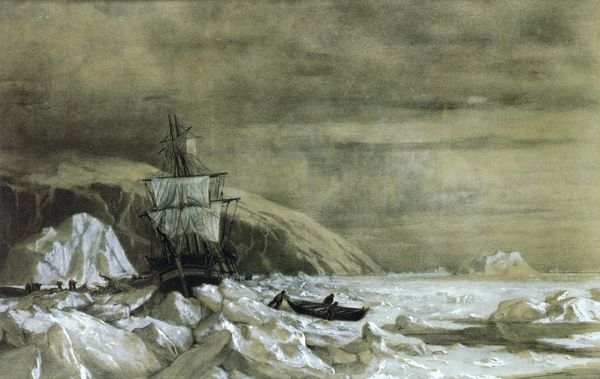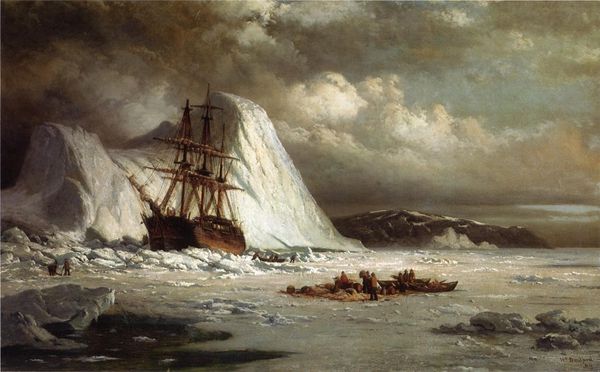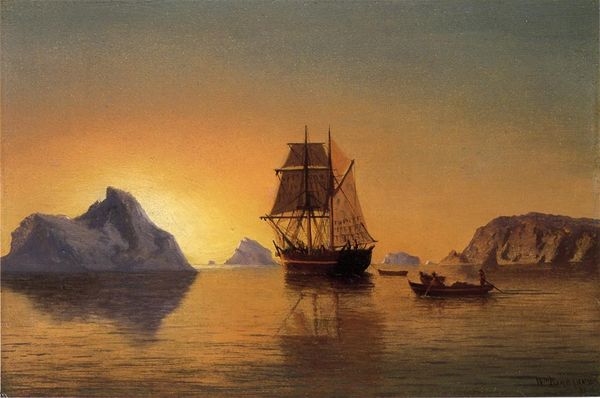
Copyright: Public domain
William Bradford created this landscape painting of ice floes in the 19th century, but the date remains unknown. Its conceptualization can be understood within the social and cultural context of the time. Here, the dominant visual codes reflect the grandeur of nature and the insignificance of human endeavors. The painting places viewers in the role of observers, who have the ability to witness the unforgiving Arctic. The work reflects the 19th century’s fascination with exploration and discovery, aligning with the United States’ ambitious colonial projects. The painting invites viewers to ponder the relationship between humanity and the natural world, a theme that resonated with the environmental consciousness of the time. Understanding this artwork requires the historian to explore records of arctic expeditions, studies of colonial expansion, and cultural attitudes towards nature during the 19th century. Art’s meaning is always dependent on its historical context.
Comments
No comments
Be the first to comment and join the conversation on the ultimate creative platform.
